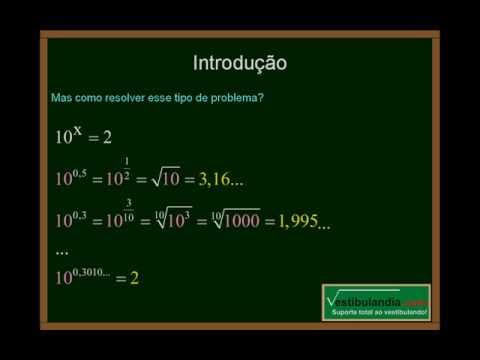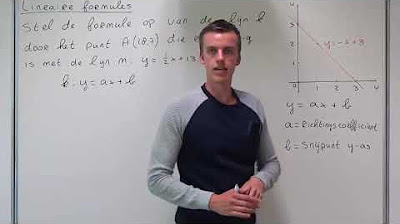02. Ecuaciones exponenciales
Summary
TLDRIn this video, the instructor guides viewers through solving an equation by equating the bases of powers. The problem involves converting 25 into a power of 5, allowing for easier manipulation of the equation. The solution follows by applying exponent laws and solving for x through a straightforward first-degree equation. The instructor provides clear steps to isolate and solve for x, offering further resources for viewers to review similar problems. The video concludes with an invitation to try a similar exercise and engage with the channel for more content and questions.
Takeaways
- 😀 The video focuses on solving a math exercise related to powers and exponents.
- 😀 Viewers are encouraged to watch the previous video and try solving the exercise themselves before watching this one.
- 😀 The first step in solving the equation is to convert 25 into a power of 5.
- 😀 To express 25 as a power of 5, recognize that 5^2 equals 25.
- 😀 The equation then becomes 5^x = 5^2x - 10.
- 😀 A key exponent rule is applied, stating that when raising a power to another exponent, you multiply the exponents.
- 😀 After applying this rule, the expression becomes 5^(2x) = 5^(2x - 10).
- 😀 Both sides of the equation are now powers of 5, allowing us to equalize the exponents.
- 😀 The equation 3x = 2x - 10 is a linear equation that can be solved for x.
- 😀 The solution to the equation gives x = -11.
- 😀 A similar exercise is left for viewers, and in the next video, the full solution will be explained.
- 😀 Viewers are encouraged to like, subscribe, and share the video. Questions and suggestions can be left in the comments.
Q & A
What is the main objective of this video?
-The main objective of this video is to solve an equation involving powers of 5 and to explain how to transform 25 into a power of 5, ultimately solving for the variable x.
Why should viewers watch the previous video before this one?
-Viewers should watch the previous video to understand the context of the exercise being solved in this video. It provides foundational knowledge and introduces the problem to be solved.
How do we transform 25 into a power of 5?
-To transform 25 into a power of 5, we recognize that 25 is equal to 5 multiplied by itself, or 5².
What exponent law is applied when dealing with powers of a base?
-The exponent law applied is that when we raise a power to another exponent, the exponents multiply. This is why 5² raised to the power of (3x-1) results in multiplying the exponents.
What is the importance of having the same base on both sides of the equation?
-Having the same base on both sides of the equation allows us to equate the exponents directly, simplifying the equation to a linear form that can be solved for the variable.
How do you solve the equation once the exponents are equal?
-Once the exponents are equal, we simply solve the resulting linear equation, which in this case is 3x - 1 = 2x - 10.
What steps are involved in solving the equation 3x - 1 = 2x - 10?
-To solve this equation, we move all terms involving x to one side and constants to the other side. Then, we simplify and solve for x, resulting in x = -11.
What does the solution x = -11 mean in this context?
-The solution x = -11 means that when x equals -11, the original equation holds true, as we have balanced both sides of the equation with this value.
Why is it helpful to leave viewers with a similar exercise at the end of the video?
-Leaving viewers with a similar exercise encourages them to practice what they've learned and reinforces their understanding of the concept by solving a comparable problem.
What should viewers do if they have questions or suggestions after watching the video?
-Viewers are encouraged to leave their questions or suggestions in the comments section of the video, where the creator can address them or other viewers can help.
Outlines

This section is available to paid users only. Please upgrade to access this part.
Upgrade NowMindmap

This section is available to paid users only. Please upgrade to access this part.
Upgrade NowKeywords

This section is available to paid users only. Please upgrade to access this part.
Upgrade NowHighlights

This section is available to paid users only. Please upgrade to access this part.
Upgrade NowTranscripts

This section is available to paid users only. Please upgrade to access this part.
Upgrade Now5.0 / 5 (0 votes)





